How To Write A Project Overview In 2025

65-80% of IT projects miss their goals, fall behind schedule, and go over budget (Project success rates: An analysis of factors in IT projects ScienceDirect, 2023).
That’s a tough reality if you're a product or project manager facing misalignment, scope creep, and unclear deliverables. These are challenges that can derail even the best-laid plans.
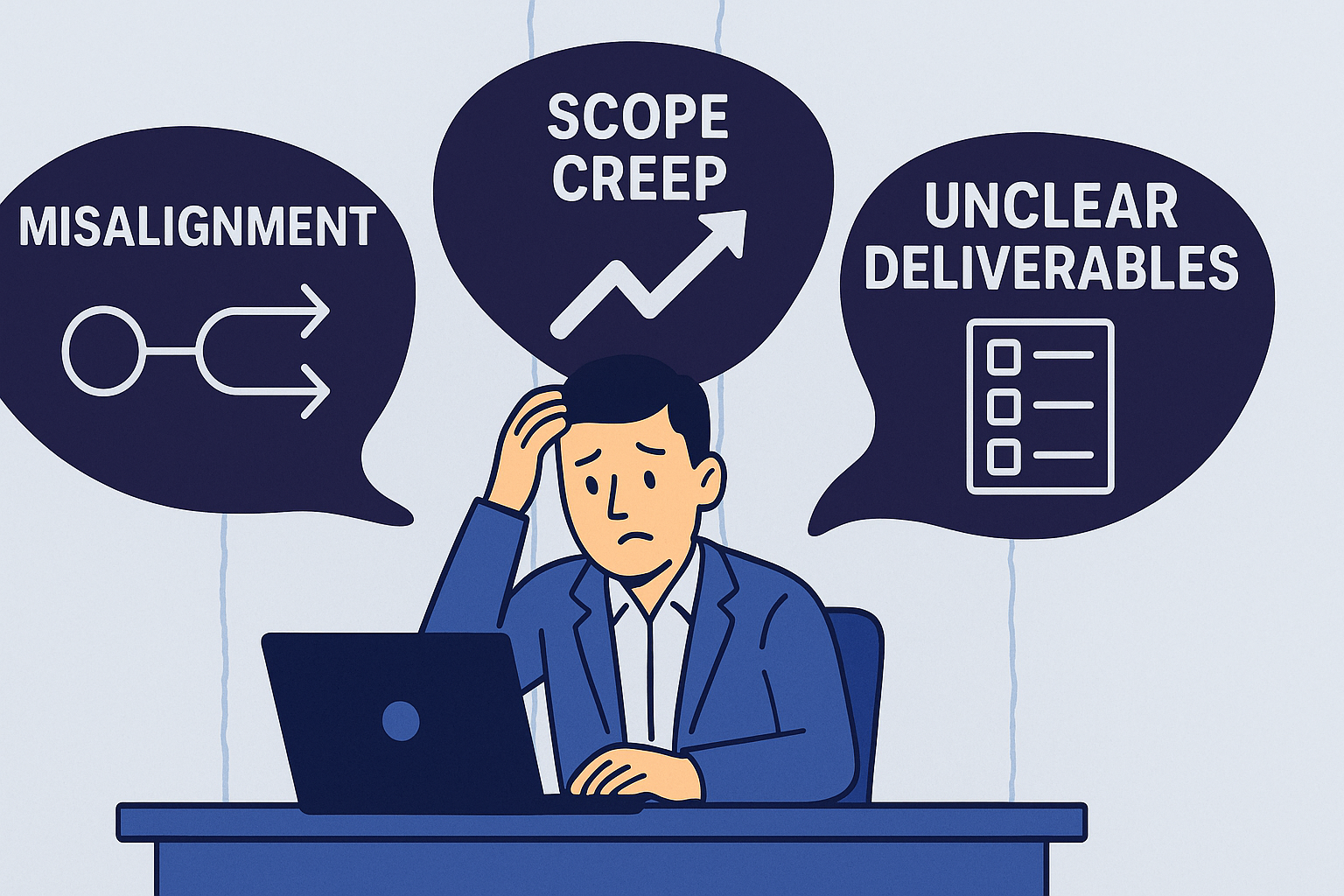 Challenges most project managers face
Challenges most project managers faceThe solution? A well-crafted project overview.
In this guide, you’ll learn how to create a clear project overview that keeps everyone on track.
We’ll share practical steps, examples, and tips to make your overview a solid foundation for success.
Plus, discover how Meegle simplifies the project management process, so you can structure your project's objectives and key details with ease.
Let’s get started on building a plan that works.
What is a project overview? Why is it important?
A project overview is a concise document that summarizes the project’s purpose, scope, and goals.
It breaks down complex plans into clear, actionable insights for everyone involved.
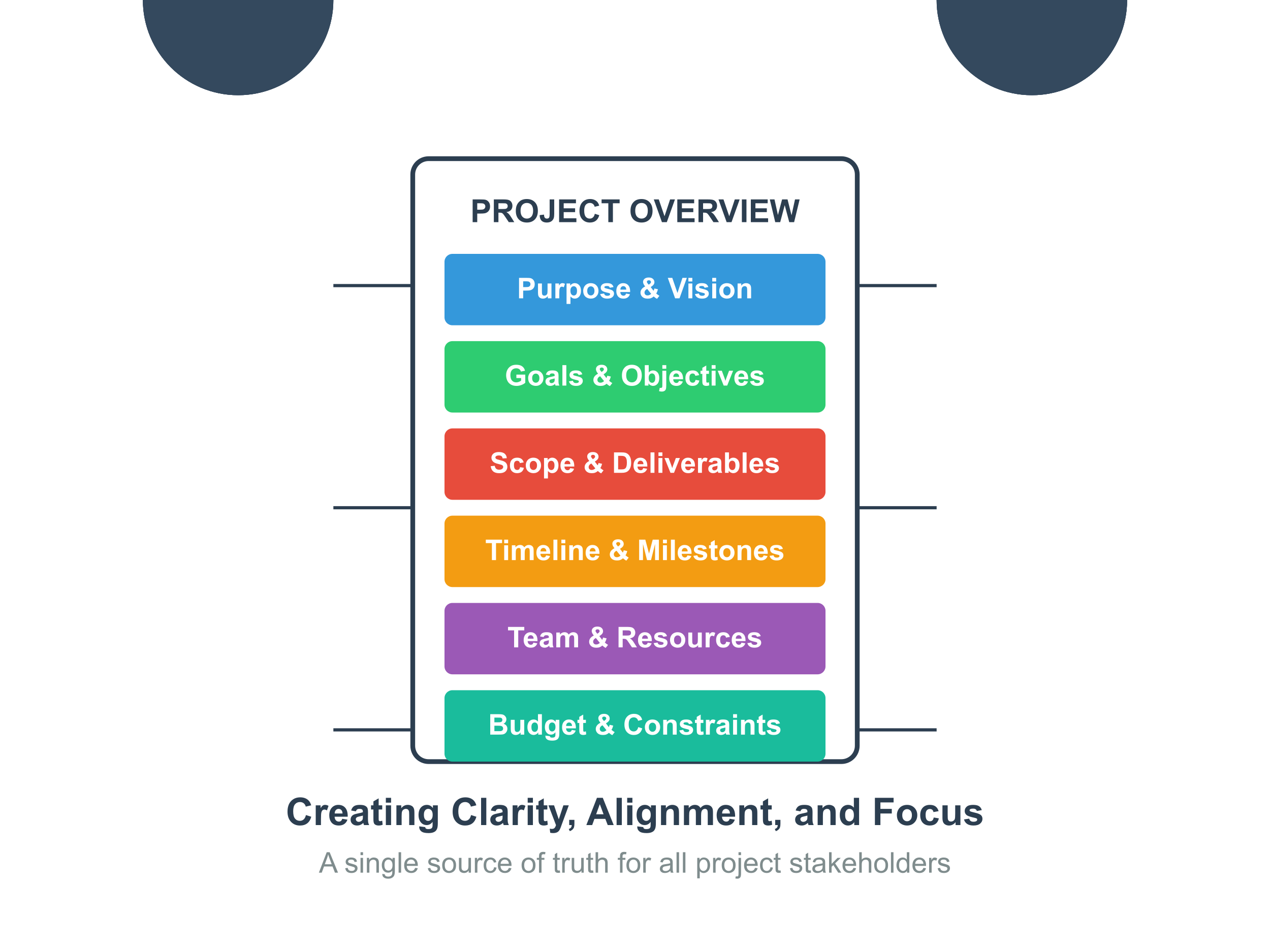 A project overview statement creates clarity, alignment, and focus
A project overview statement creates clarity, alignment, and focusIt prevents confusion and keeps teams focused by organizing critical information like objectives, timelines, and key deliverables. It includes:
- Objective and scope
- Timeline and key milestones
- Stakeholders and roles
- Deliverables and success metrics
- Risks and assumptions
The project overview serves as a tool used by project managers to align diverse stakeholders (e.g., executives, developers, etc.), reduce ambiguity, making it easier to communicate what the project covers.
When to create a project overview
The best time to create a project overview is during the initiation phase, before detailed project planning begins. This early clarity is crucial for product launches and cross-functional projects, where alignment gaps can quickly lead to confusion, delays, or scope creep.
Adapting to your organization’s project management maturity
Teams approach projects differently based on their experience. So tailor your project overview to fit your team’s level of maturity:
| Maturity Level | Focus Area | Key Activities | Goal |
|---|---|---|---|
| Beginners | Basics | Clear goal definition, simple documentation | Build confidence, establish foundational skills |
| Intermediate | Workflow integration | Cross-functional alignment, streamlined execution | Prioritize collaboration, improve efficiency |
| Advanced | Strategic portfolio alignment | Data-driven insights, portfolio optimization | Maximize strategic impact, optimize outcomes |
This ensures your overview is practical and effective – no matter where your team stands.
According to PMI's Pulse of the Profession report, organizations with mature project management practices are 21% more likely to meet their project goals, as shown in this image.
 Chart of organisation with high and low maturity
Chart of organisation with high and low maturityThat means a strong project overview can directly improve your odds of delivering on time and within budget.
How to write a project overview: A step-by-step guide
Creating an effective project overview might seem difficult. However, focus on capturing the essentials so decisions can be made faster and with context. For example, noting that the goal is to “reduce support ticket response time by 30% in Q3” gives the team a clear direction and measurable target from day one.
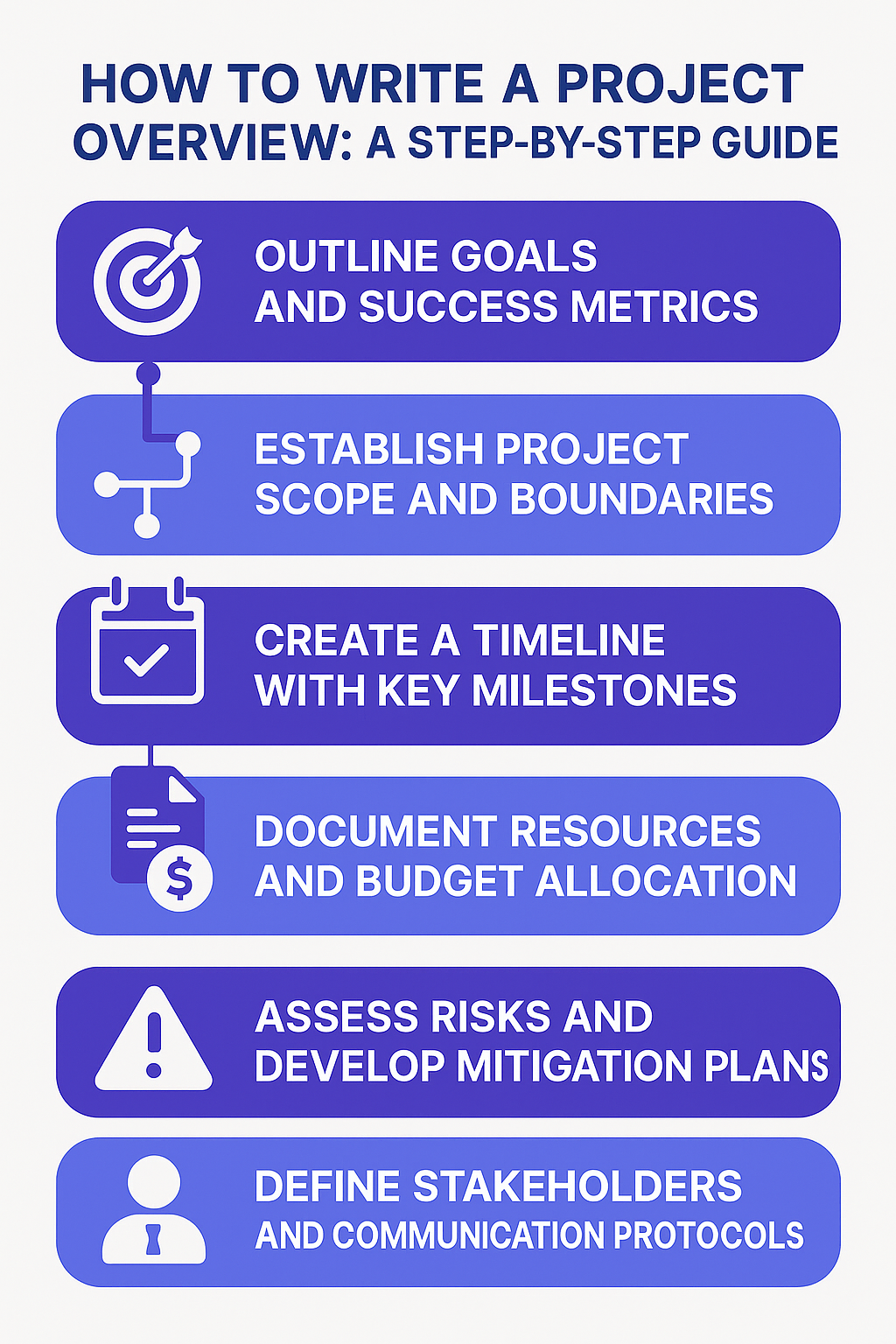 Creating a project overview step-by-step
Creating a project overview step-by-stepFollow this guide to create a project overview that sets your team up for success, using Meegle to make the process easier.
Step 1: Outline goals and success metrics
Start by defining the expected outcomes of your project. Use the SMART framework (Specific, Measurable, Achievable, Relevant, Time-bound) for clarity.
| Unclear Goal | SMART Goal |
|---|---|
| Increase user engagement | Increase DAU/MAU ratio from 0.3 to 0.5 by Q3. |
| Improve outreach | Grow email subscribers by 20% in the next 2 months. |
| Boost revenue | Increase monthly recurring revenue by $10K by end of Q4. |
| Launch product soon | Launch v1.0 by June 30 with milestones at weeks 4, 8, and 12. |
| Improve site performance | Reduce page load time by 2 seconds across top 5 pages. |
| Build the foundation quickly | Complete foundation by month 3 with weekly progress check-ins. |
| Increase customer retention | Improve loyalty program retention rate by 15% in 6 months. |
| Expand user base | Acquire 500 new users through referral campaigns by September. |
For example, instead of a vague goal like “increase user engagement,” aim for something precise: “Increase DAU/MAU ratio from 0.3 to 0.5 by Q3.” This is specific and measurable, with a clear timeline.
Use the SMART framework like this:
- Specific: Pinpoint exactly what you’re targeting. A marketing project might aim to “grow email subscribers by 20%” rather than “improve outreach.”
- Measurable: Choose KPIs like revenue growth or task completion rates. Meegle makes this easy with built-in reporting tools and a simple OKR template, so you can track project objectives and spot issues before they slow you down in real time.
 Track project KPIs with Meegle
Track project KPIs with Meegle- Achievable: Base targets on past data. If your team’s never hit 50% growth, aiming for 10-20% is smarter.
- Relevant: Tie goals to business priorities, like boosting customer retention for a loyalty program.
- Time-bound: Set deadlines, like “launch by June 30” with milestones at weeks 4, 8, and 12.
For a software project, success metrics might include “reduce load time by 2 seconds.” For construction, “complete foundation by month 3.”
Aim for clear project's goals, as it keeps everyone focused.
Suggested Read:👉Key Agile Metrics & KPIs for Measuring Team Performance
Step 2: Establish project scope and boundaries
Next, define your project scope and boundaries – your project details, including what’s in and what’s out. Without it, projects will seem out of control.
Say you’re building an app. Include core features like user login and payment integration, and exclude “nice-to-haves” like gamified rewards unless they’re important.
Here's how to establish project scope and boundaries:
- Inclusions and exclusions: Include a detailed description of key deliverables. For a website redesign, include “new homepage and checkout flow” but exclude “blog overhaul.”
- Decision framework: Use a must-have vs. nice-to-have filter. Must-haves drive the project’s purpose; nice-to-haves can wait.
- Impact vs. effort: Prioritize high-impact, low-effort tasks. A new search feature could be highly beneficial to users (high impact) and only take a week to build (low effort). It's a keeper.
- Preventing scope creep: Document boundaries early to avoid confusion and misalignment later. If a team member suggests adding a chatbot mid-project, check it against your scope. This helps manage expectations and prevents conflicts with stakeholders over unplanned features.
- Dependency mapping: Identify what relies on what. For example, you can’t test the app until the backend’s ready. Meegle’s Tree View shows these dependencies as a clear, branching structure – so your team understands what’s blocking what and can plan smartly.
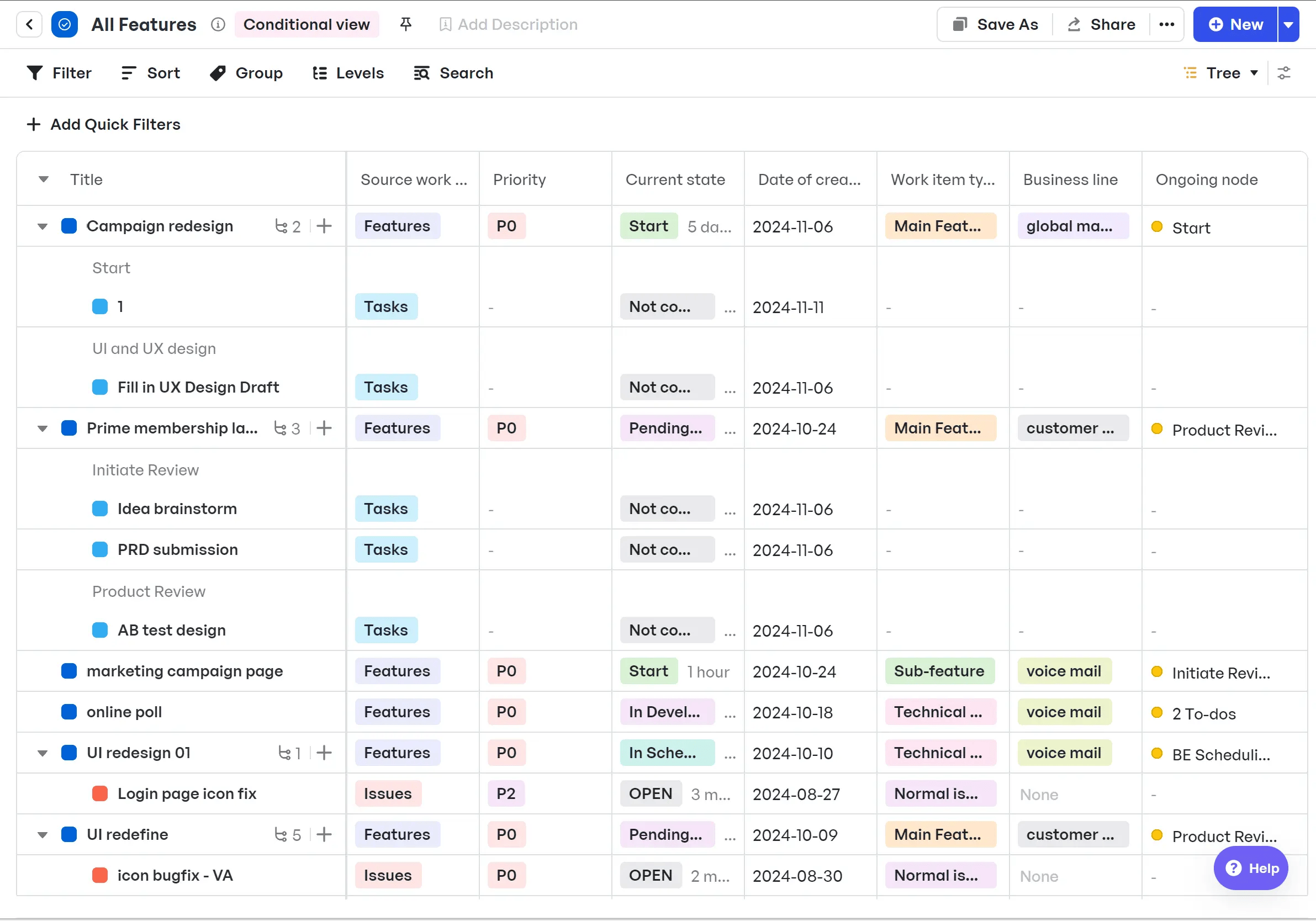 Meegle’s Tree View for project management
Meegle’s Tree View for project managementSuggested Read:👉 How to Define and Create a Project Scope
Step 3: Create a timeline with key milestones
A timeline turns your plan into a roadmap for the project lifecycle. It’s a sequence of milestones that show progress. When defined properly, it keeps your team on course and stakeholders stay informed.
For a product launch, milestones might be “prototype ready by week 6,” “beta testing by week 12,” and “launch by week 20.”
To help with creating a project timeline, use:
- High-level roadmap: Break your project into phases, such as planning, development, and rollout. Assign approximate dates to each phase to create a big-picture view.
- Critical path: Pinpoint tasks that can’t afford delays, like securing permits for a construction project.
These are your critical path tasks, as delays here push the entire project back. Meegle’s visual workflow highlight these dependencies, so you know exactly what needs to be done.
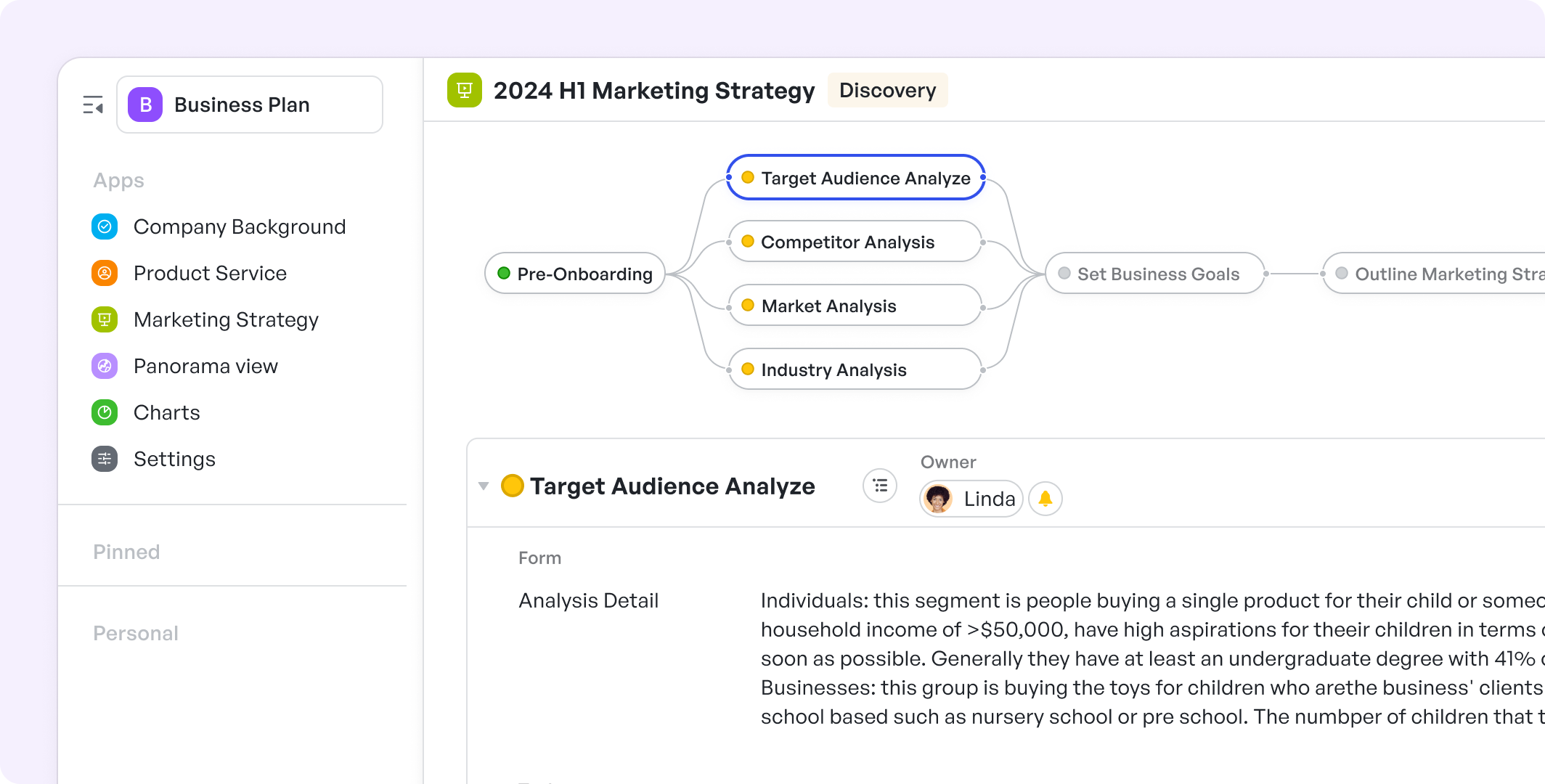 Task dependencies on Meegle
Task dependencies on Meegle- Visual timeline: Choose a project timeline that suits your team. In Meegle, you can switch between Table, Tree, Gantt, Kanban, and Panorama Views.
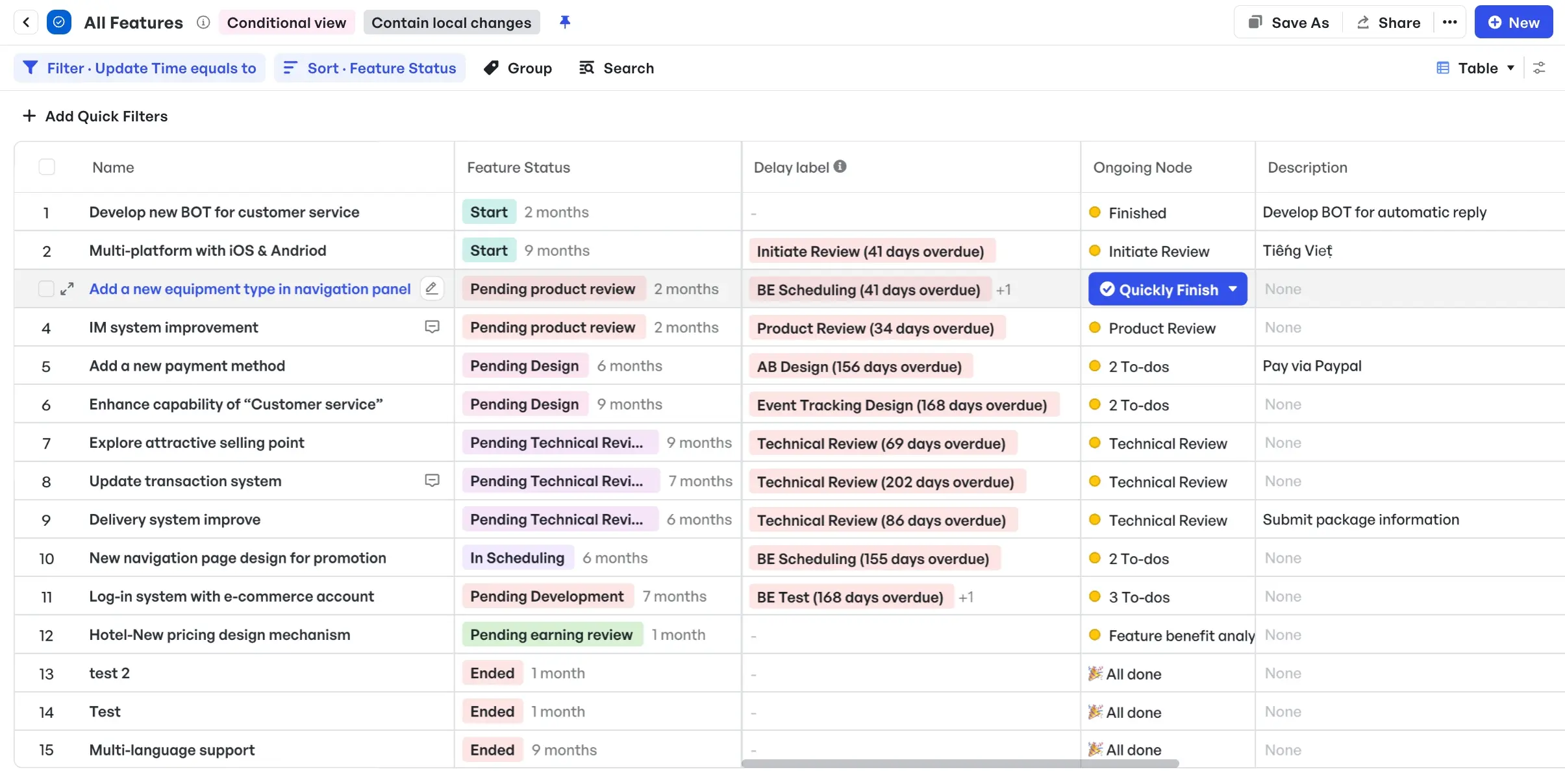 Meegle's Table View
Meegle's Table View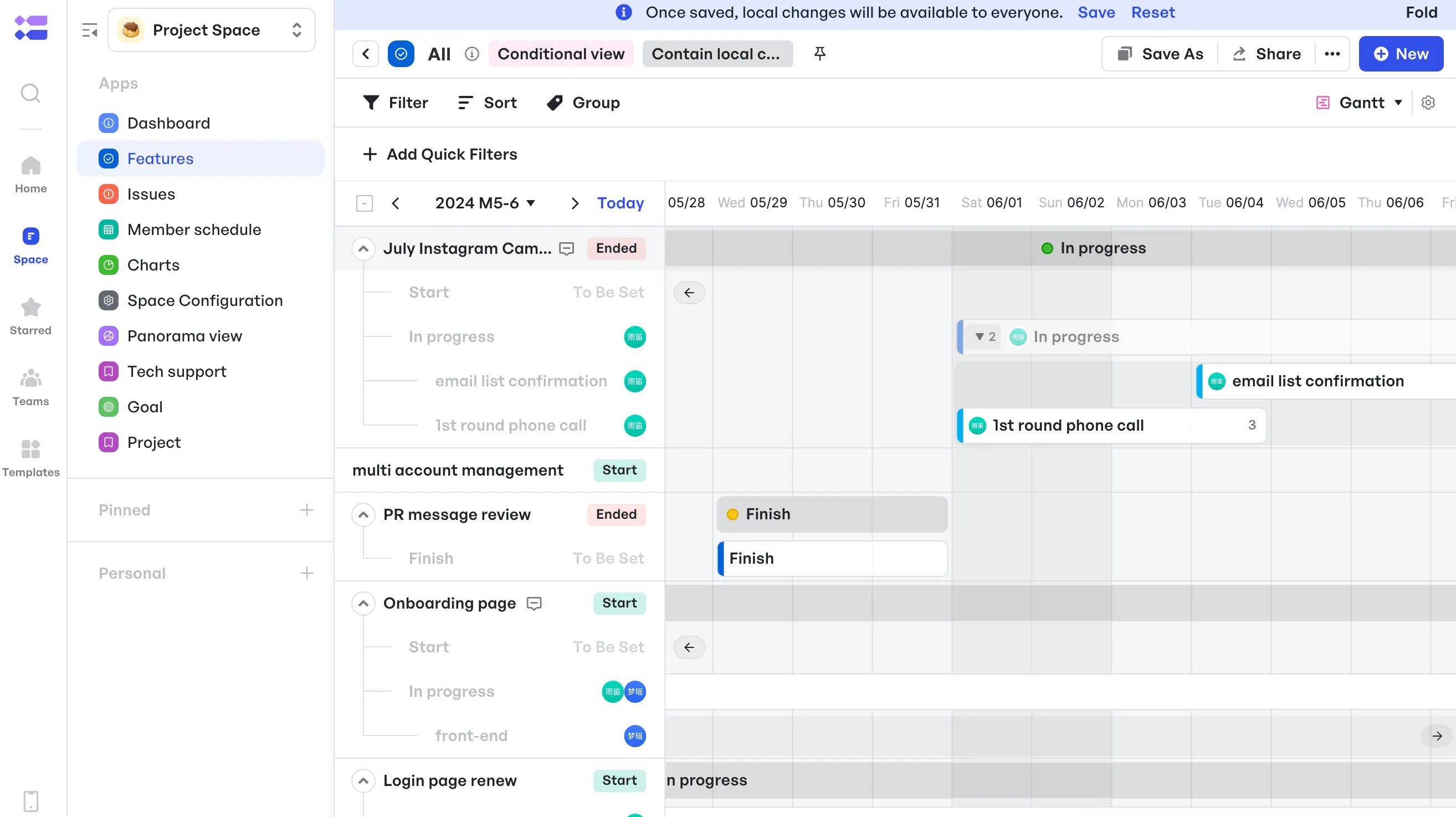 Gantt View in Meegle
Gantt View in Meegle Meegle's Panorama View
Meegle's Panorama ViewEach of these views is designed to help you visualize project phases and makes it easy to share progress with your team.
For example, if you're running a marketing campaign, you can set milestones like “Content finalized by June 15” and “Ads live by July 1.” These become clear and actionable when displayed on a timeline.
Use Meegle to build a visual plan that keeps your project organized and your team on track.
Suggested Read:👉7 Best Project Timeline Software Solutions for 2025
Step 4: Document resources and budget allocation
Projects need people, tools, and funding. Documenting resources avoids surprises like running out of budget halfway through.
For a video campaign, you might need a videographer, editing software, and $10,000 for production. To get your budget and resource allocation right, you need:
- Strategic allocation: Match tasks to skills. Identify the expertise needed for each task and assign team members accordingly.
For example, a website redesign requires a UX designer for wireframes, a front-end developer for coding, and a copywriter for copy. Review team members’ previous projects, deliverables, or skill certifications to ensure a good fit.
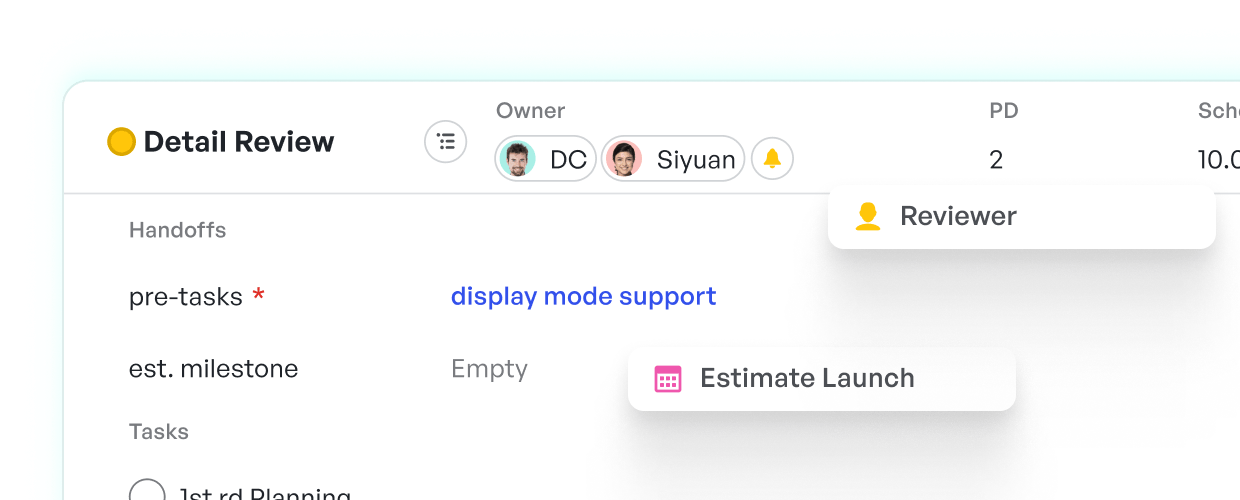 Resource allocation and project details on Meegle
Resource allocation and project details on MeegleBeyond matching skills to tasks, it is equally important to manage each team member's workload. Never overload your project team. If your designer is already working on three projects, they most likely can’t handle a fourth.
- Technology needs: Identify your go-to tools. Use Meegle for project and task management, or Adobe for design.
- Budget breakdown: Estimate costs, like $5,000 for labor and $2,000 for tools, with 10% extra for surprises. Meegle’s reporting can help you track spending.
For a small event, you might allocate $1,000 for catering and two staff for setup. Clear resource allocation prevents overspending.
According to PMI, many teams also set aside a management reserve. Typically 5% to 15% of the project cost to handle unexpected expenses with proper approval.
Including this buffer upfront reduces the risk of budget-related surprises down the line.
Step 5: Assess risks and develop mitigation plans
Every project is prone to risks. Identifying them early keeps you prepared. For a website launch, a potential risk might be “server crashes during peak traffic.”
To handle this:
- Identify potential risks: Brainstorm what could go wrong – delays, budget overruns, or technical glitches.
- Impact vs. probability: Rate each risk based on its potential impact and probability. A server crash is high-impact but low-probability with good hosting. A late vendor delivery might be high-probability for a construction project.
- Mitigation techniques: Plan ahead. For a crash risk, have a backup server ready. For vendor delays, order materials early.
- Contingency plans: Have a backup plan. If a key developer becomes unavailable due to illness in the middle of a launch? What's your plan? You should have cross-trained another team member.
You can use the Meegle task management and automation feature to reassign this task accordingly.
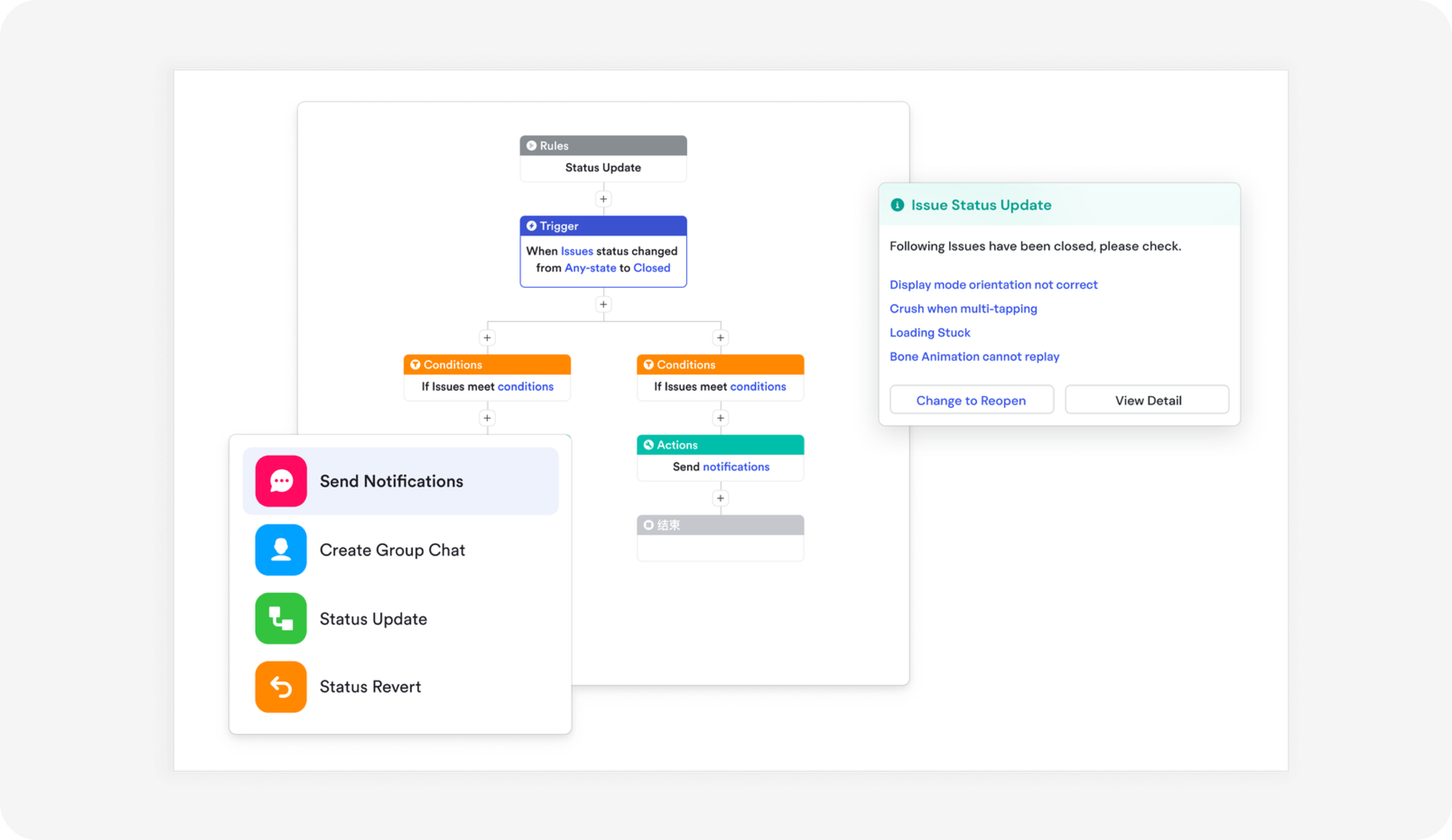 Create and automate mitigation task on Meegle
Create and automate mitigation task on MeegleAlso, what if a retail project faces the risk of “supply chain delays?” You should mitigate this by sourcing from multiple suppliers. Being proactive saves headaches.
Suggested Read:👉Mastering Risk Management in Projects: Strategies and Tools
Step 6: Define stakeholders and communication protocols
Key stakeholders (executives, team members, clients) have different needs. A clear communication plan for stakeholders ensures timely updates without micromanaging.
To meet these varied expectations, it’s important to understand each group’s unique:
- Perspectives: Executives want high-level updates on ROI. The project team needs task clarity. Clients care about deliverables. Tailor your project overview, updates, and reporting style based on stakeholder needs.
- Gathering input: Involve non-PM teams early. Engineers can highlight what is technically feasible or infeasible.. Marketing might ask for changes to fit the brand. Finance might tell you how much money you can actually spend.
- RACI matrix: Define who’s Responsible, Accountable, Consulted, and Informed. For a product launch, the PM is accountable, developers are responsible for coding, and sales is consulted on features.
- Communication cadence: Set standards such as, a weekly team update and a monthly stakeholder report.
 Project members communicating meaningfully
Project members communicating meaningfullyUse email for formal updates and Slack for quick check-ins,but don’t let important feedback stay unread.
Meegle’s built-in comment features help keep conversations tied to specific tasks and timelines, so it's easier for everyone to stay on the same page.
Why a standardized operating procedure (SOP) is essential
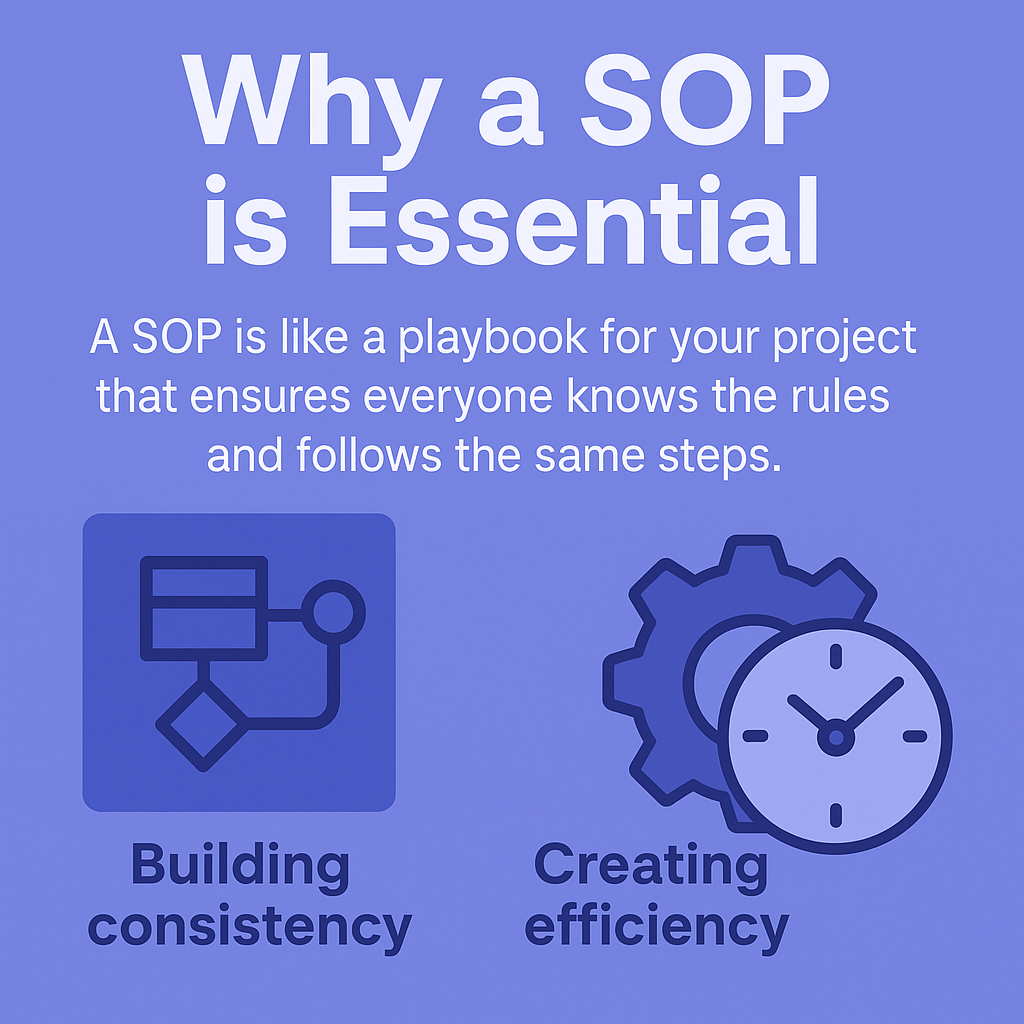 Why a SOP is essential in writing a project overview
Why a SOP is essential in writing a project overviewStandard Operating Procedure (SOP) is a step-by-step guide that outlines how specific tasks or processes should be carried out.
It is like a playbook for your project that ensures everyone knows the rules and follows the same steps.
When writing a project overview, a SOP saves time and reduces errors because it's clear and consistent. Here’s why it's important:
Building consistency across project documentation
SOPs create a uniform approach to documenting your project overview. By standardizing how you outline goals, scope, or timelines, you reduce the chance of misinterpretation.
If every team uses the same format for defining deliverables, there would be no confusion about what’s expected.
The consistency supports better alignment, especially in cross-functional teams where marketing, engineering, and finance might otherwise interpret “success” differently.
Creating efficiency through standardization
Standardization saves time and effort. Studies from pharmaguideline show that teams using SOPs can cut rework by up to 30%, as there’s less back-and-forth fixing mistakes.
Beyond efficiency, SOP standardization also supports audit-readiness and compliance, especially in regulated industries where clear documentation is important for passing inspections and meeting reporting standards.
SOPs also make knowledge transfer seamless. When a new team member joins, they can quickly grasp the project’s structure by following the SOP.
For instance, a documented process for updating timelines ensures no one wastes time guessing how to report progress.
With this efficiency, your team can focus on execution instead of figuring things out from scratch.
How Meegle’s node-driven structure supports SOPs
Meegle makes SOPs practical and visual. Its node-driven workflow helps break projects into clear sections, each with specific tasks, creating a hierarchical task management system that’s easy to follow.
The Tree, Gantt, or Kanban View visually represents this structure, so everyone sees how tasks connect.
Meegle also offers customizable templates that help clearly define project scope, objectives, and stakeholder updates.
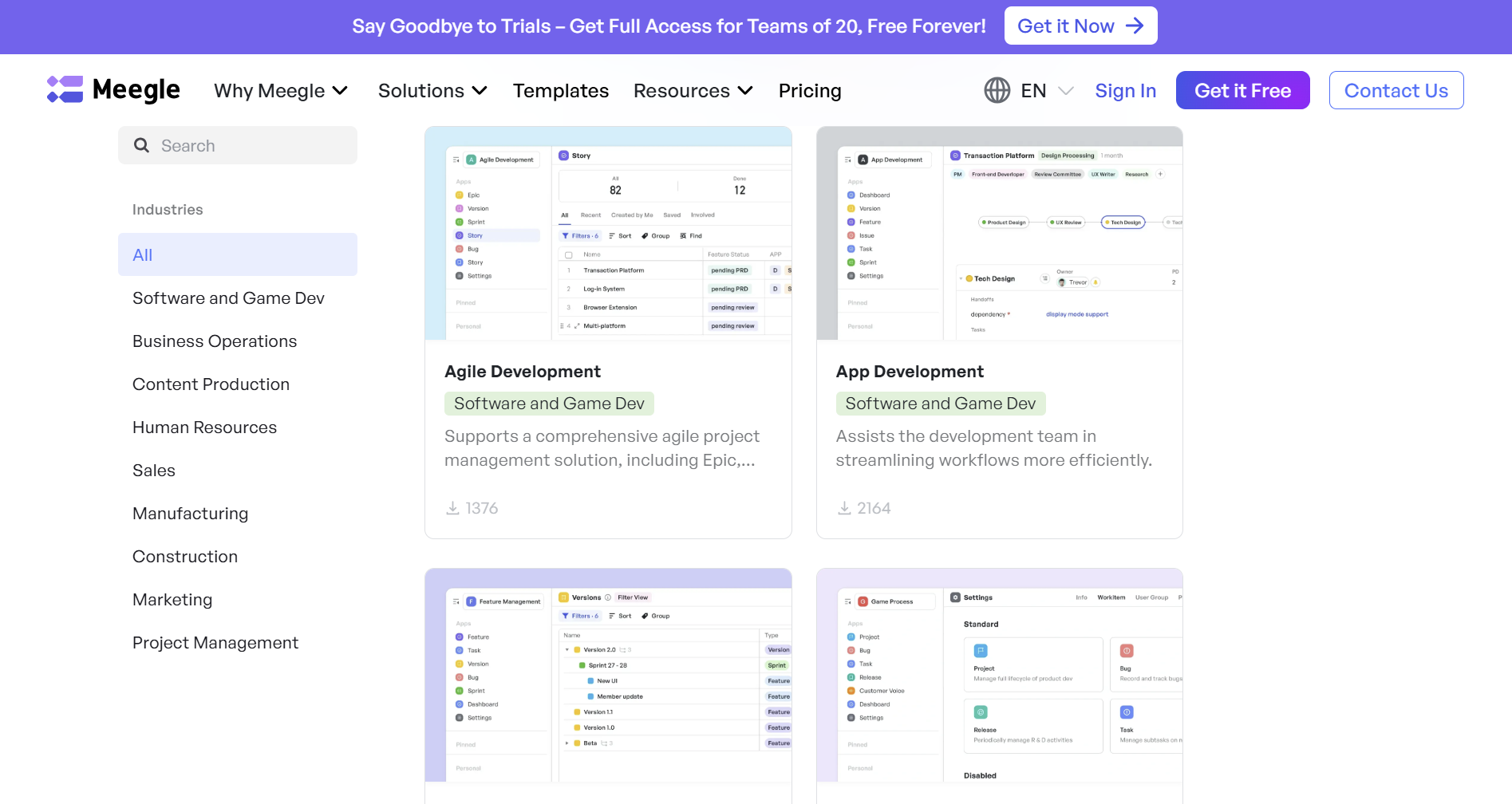 Meegle's pre-defined, customizable templates
Meegle's pre-defined, customizable templatesWith this, it is easier to follow standardized processes across teams and industries.
This clarity supports consistent documentation and smoother execution from the start. Use these templates to make your project overview concise and actionable.
What not to do when creating a project overview
A project overview is your project’s guide to success, but missteps can throw it off course.
 What not to do when creating a project overview
What not to do when creating a project overviewBelow, we highlight five common mistakes, explain why they’re a problem, and offer specific advice on what to do instead.
| What Not to Do | Why It's a Problem | What to Do Instead |
|---|---|---|
| Not defining clear project goals and objectives | Ambiguous goals like “boost sales” create confusion and waste time. | Set measurable goals using Meegle's template (e.g., the Agile Development or OKR template). |
| Not outlining the project scope and timeline | It leads to delays and scope creep. | Map out scope and milestones early. Use Meegle’s visual workflow to define boundaries, dependencies, and deadlines. |
| Not identifying the main stakeholders and their roles | It causes miscommunication and duplicate work. | Use RACI matrices and Meegle’s collaboration tools to assign roles clearly. |
| Not providing regular updates on the project’s progress | Stakeholders lose confidence and escalate issues. | Share consistent project status updates using Meegle’s real-time reporting tools with stakeholders. |
| Not using a project overview template | Risk of missing important details and inconsistent formats. | Use Meegle’s project overview templates, to ensure a structured, repeatable process. |
Project overview templates and examples
A project overview template is a pre-built framework that eases the creation of clear, actionable project plans.
As mentioned earlier, Meegle offers a range of free project overview templates, each designed to address unique project requirements while being highly customizable.
These templates help project managers, developers, and other professionals organize goals, scope, timelines, and clients efficiently.
With Meegle, you can tailor each project overview template to fit your team’s workflow, for better alignment and clarity across diverse industries.
Industry-specific templates for project overview
Below, we outlined four key templates, their main features, use cases, and target audiences.
| Industry-Specific Template | Key Features | Use Case & Audience |
|---|---|---|
| Software/App development | Agile sprint and milestone tracking | Built for development and engineering teams |
| Marketing plan | Centralized asset and campaign management | Designed for marketing teams |
| Construction engineering | Detailed phase and risk management | Designed for construction engineers and architects |
| Feature management | Requirement and version control | Aimed at development, engineering, and product teams |
Software/App development template
Built for development and engineering teams, this project overview template supports software and app creation by organizing epics, stories, and tasks.
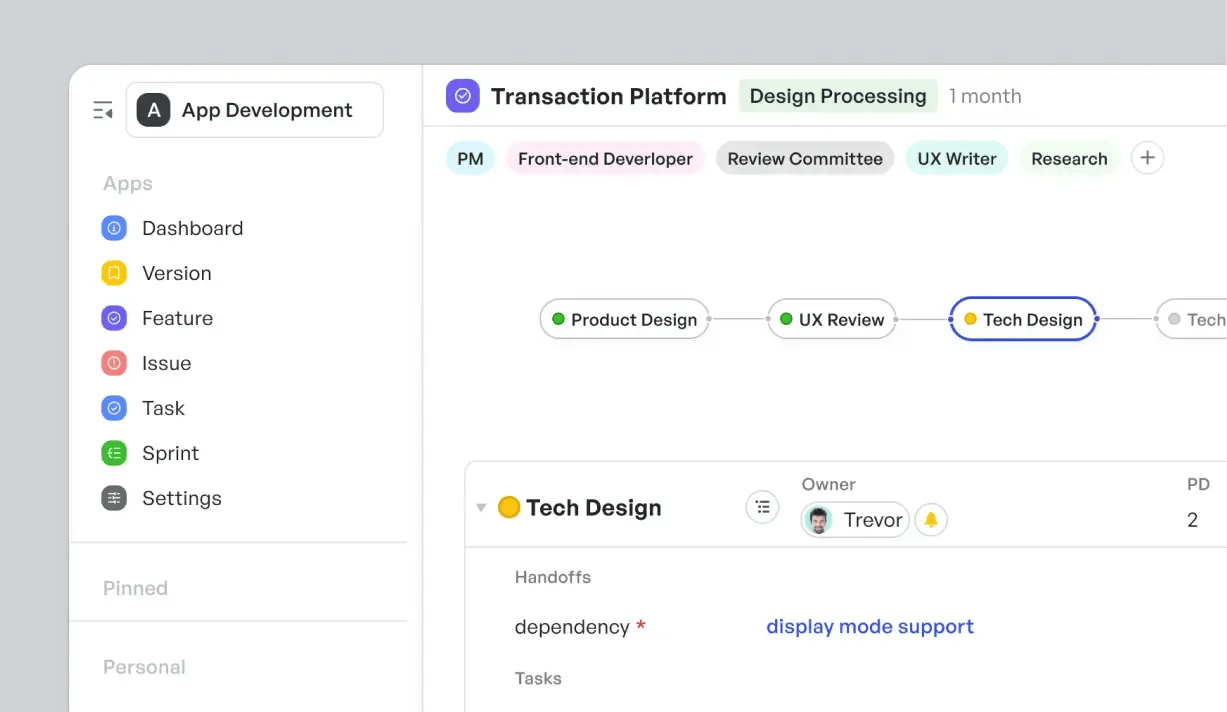 App development template
App development templateKey features:
- Feature tracking with interactive roadmaps
- Issue linkage and bug management
- Integrated version control
- Pre-configured and customizable workflows
- Detailed feature tickets with documentation
- Role-based task assignment and collaboration
- Real-time dashboards and progress tracking
For example, using Meegle’s app development template, a tech team can track a new app’s journey from design to deployment through interactive roadmaps, feature tickets, and customizable workflows. They can ensure technical requirements are clearly documented, bugs are resolved promptly, and each release version stays aligned with business goals, ensuring faster and more efficient delivery.
Meegle’s customizable workflows let you adjust timelines or integrate with tools like GitHub, so developers have better flexibility.
Marketing plan template
Designed for marketing teams, this project overview template simplifies campaign planning by consolidating audience insights, creative assets, and KPIs.
 Marketing Plan template
Marketing Plan templateKey features:
- Campaign timeline planning with content calendars
- Asset management for creatives, decks, and media files
- KPI tracking dashboards for impressions, clicks, and conversions
- Task delegation and approval flows for faster execution
- Custom fields for audience segmentation and messaging
- Real-time progress updates for internal and client reviews
For instance, a product marketing team preparing for a new launch can use Meegle’s marketing template to plan and manage their entire campaign.
From building a content calendar to assigning creative tasks and tracking KPIs, the template keeps every detail in sync.
Stakeholders get a bird’s-eye view of campaign status, and marketers avoid using different tools or chasing updates manually.
Construction engineering template
Designed for construction engineers and architects, this project overview template structures complex projects like building developments.
 Construction engineering template
Construction engineering templateKey features:
- Site planning sections and zoning milestone checkpoints
- Compliance documentation management
- Risk tracker for material delays and inspection issues
- Gantt-style visual schedules for phase tracking
- Budget breakdown fields with change-order tracking
- Integrated collaboration tools for contractors and construction teams
A project team managing a commercial building can use this template to break down phases from permitting to handoff.
For instance, they can log inspections, track weather-related delays, and ensure budget allocations are monitored in real time.
With built-in risk tracking and milestone visualization, the team stays aligned across trades, contractors, and suppliers.
Feature management template
Designed for product, engineering, and development teams, this project overview template helps manage feature lifecycles within larger software initiatives.
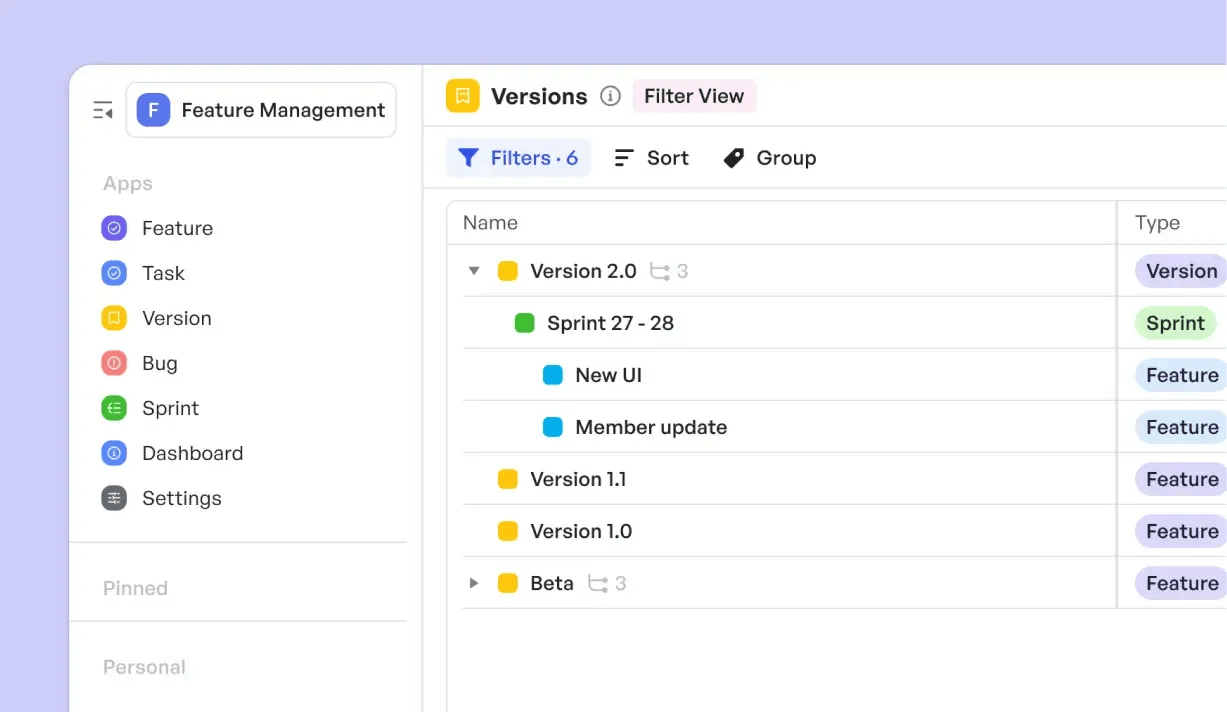 Feature management template
Feature management templateKey features:
- Structured fields for feature specs and user stories
- Version history tracking with rollback options
- Integrated sprint timelines and release windows
- Commenting and issue threads per feature
- Cross-functional team collaboration views
- Tagging system for priorities, status, and dependencies
For example, a product team rolling out a new payment feature can use this template to document requirements, link issues to features, and align timelines with engineering.
Each ticket captures detailed notes, status, and versioning. PMs can easily track what’s shipping when, while QA logs bugs in the same workflow.
Thereby reducing bottlenecks across the feature lifecycle.
How Meegle enhances project overview creation
While earlier sections showed how Meegle helps teams stay structured and aligned, there’s more to it than templates and timelines.
This section focuses on how Meegle streamlines the process of creating a project overview.
Turning it from a static document into a collaborative workspace that evolves with your project.
Meegle is designed to bring clarity and collaboration to every step of your project management and overview creation.
Our visual hierarchy, real-time features, and tracking capabilities help project managers create concise, actionable overviews that keep teams aligned and stakeholders informed.
Visual project mapping with node-driven structure
Meegle’s node-driven workflow breaks down complex projects into clear, visual maps.
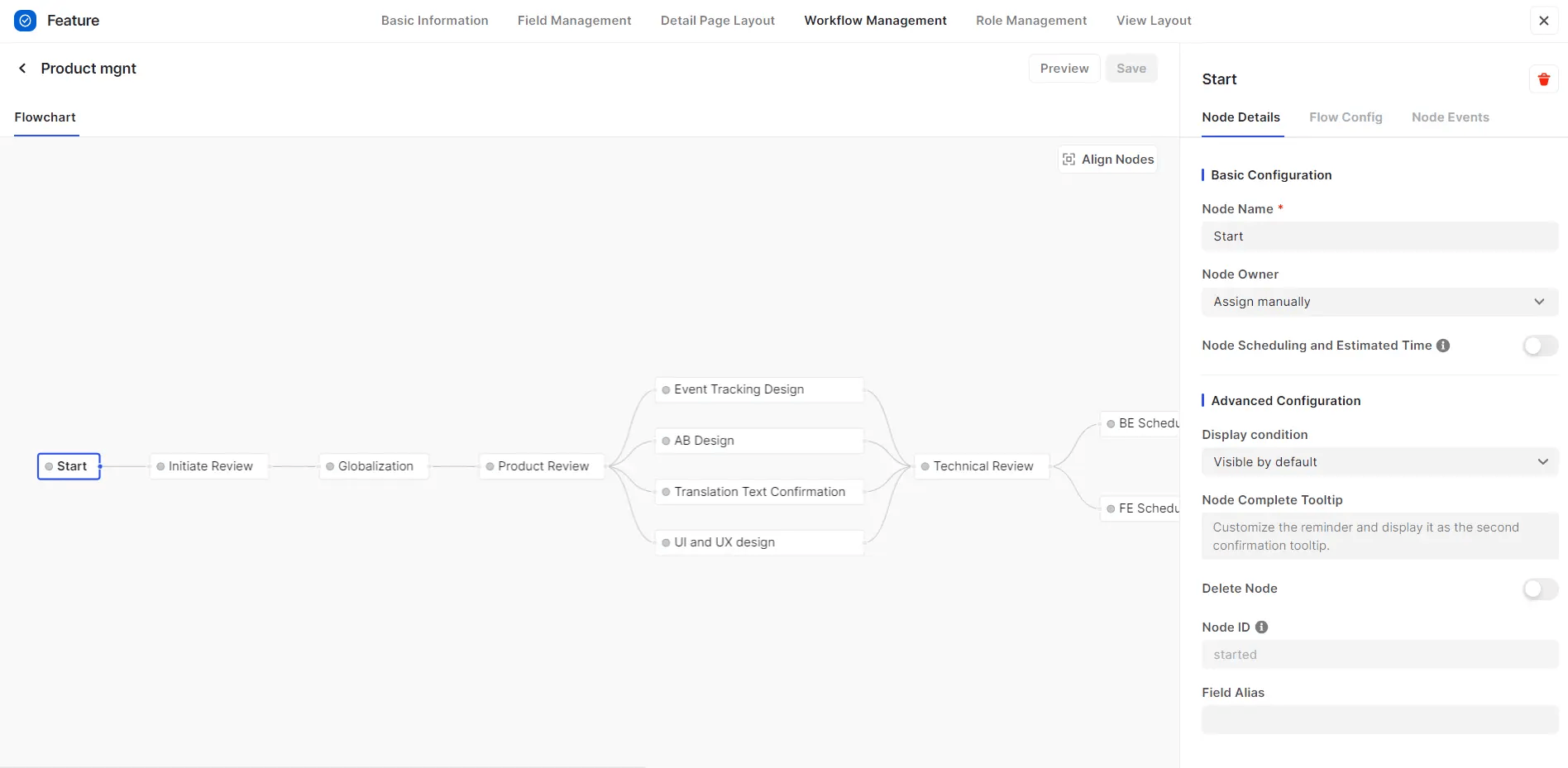 Node details
Node detailsEach node represents a task or deliverable, connected to show dependencies, so it is easy to see how pieces fit together.
Meegle’s Tree View makes key details a visual reference point, perfect for spotting bottlenecks.
 Tree View on Meegle
Tree View on MeegleFor example, in a software project, nodes might link “design approval” to “development start,” for logical flow. This relationship mapping keeps your overview organized and easy to follow.
Real-time collaboration capabilities
Meegle enhances teamwork with real-time collaboration tools. With multi-user editing, team members can update the project overview simultaneously, which reduces delays.
For instance, a designer can tweak deliverables while a developer adds technical notes, all in one place.
Also, our comment and feedback workflows improve communication. Team members can tag each other or leave notes directly on tasks, like flagging a scope concern for review.
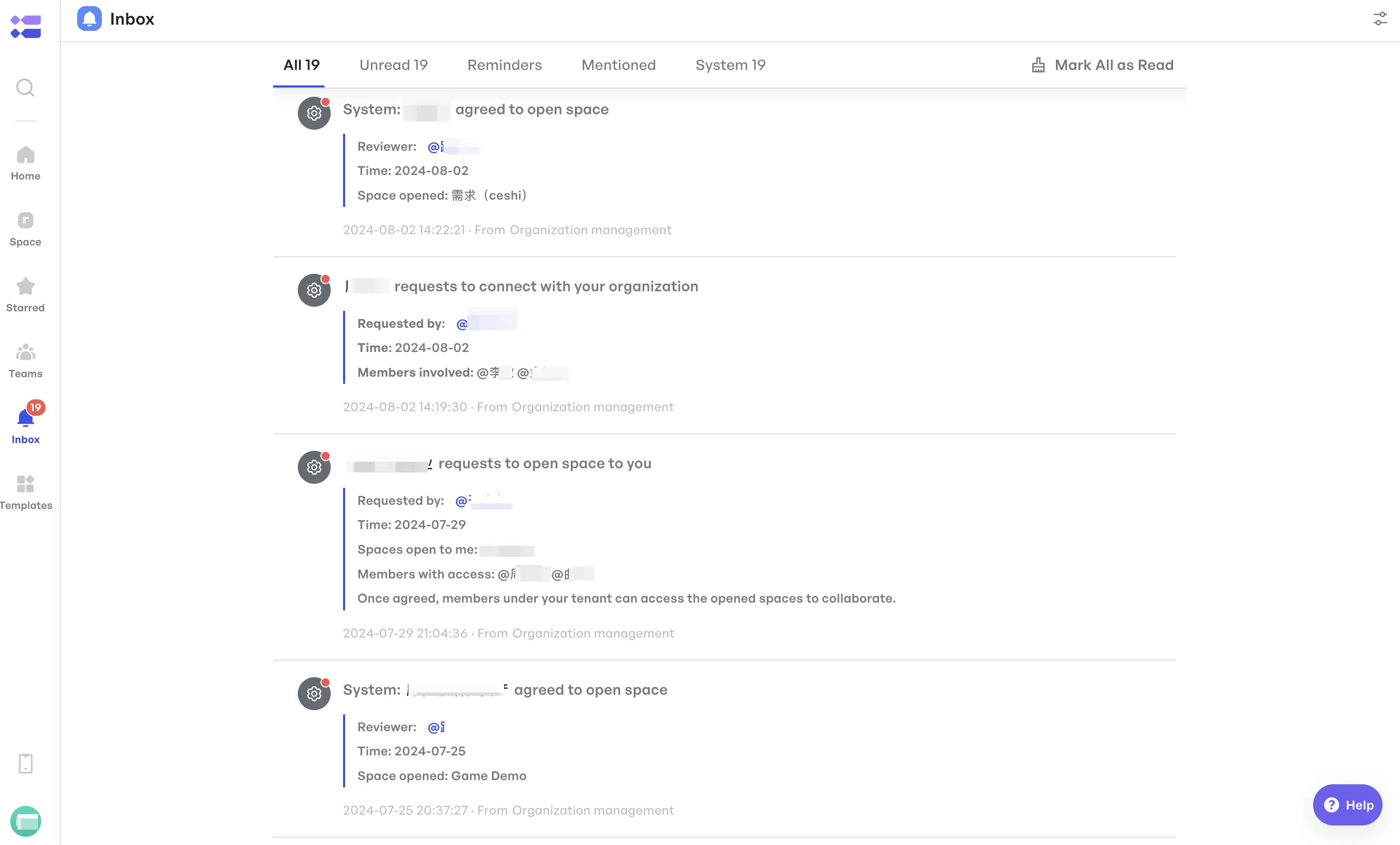 Inbox center function for responding to comments and feedback
Inbox center function for responding to comments and feedbackThis centralized approach minimizes email clutter and keeps discussions tied to the overview, so everyone stays aligned.
Dynamic updates and performance tracking
Meegle keeps your project overview current with dynamic updates.
- Change tracking logs edits, so you can see who adjusted the timeline or scope.
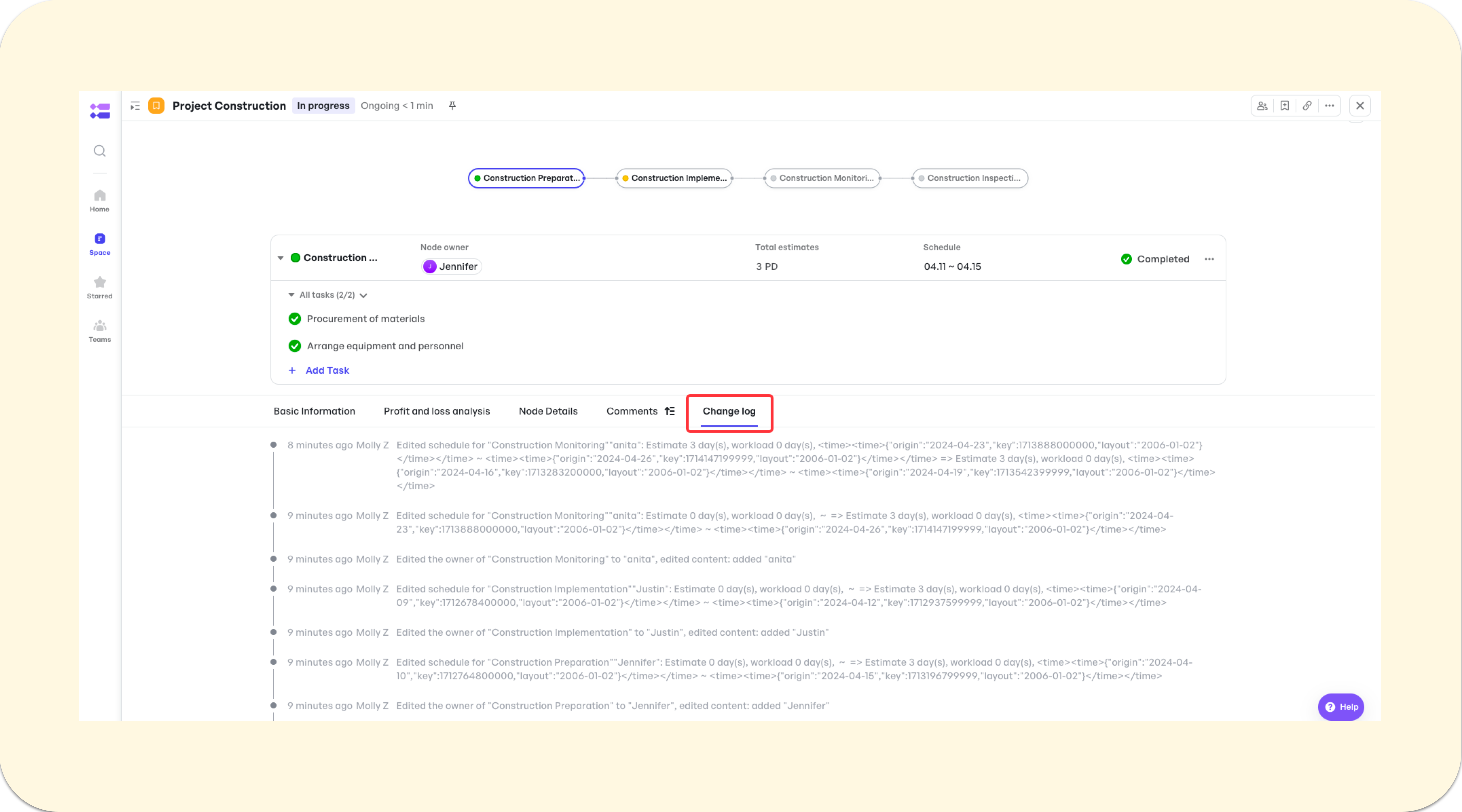 Change log
Change log- Optimizes team capacity and resource planning with a calendar view displaying team member schedules and workloads, estimated by person-day, to streamline task coordination and avoid conflicts.
- Automated notifications alert stakeholders to project status updates, like milestone completion, preventing missed updates.
- Progress visualization through charts, such as Kanban or Gantt Charts. They show performance against key metrics, like task completion rates, helping you spot delays early.
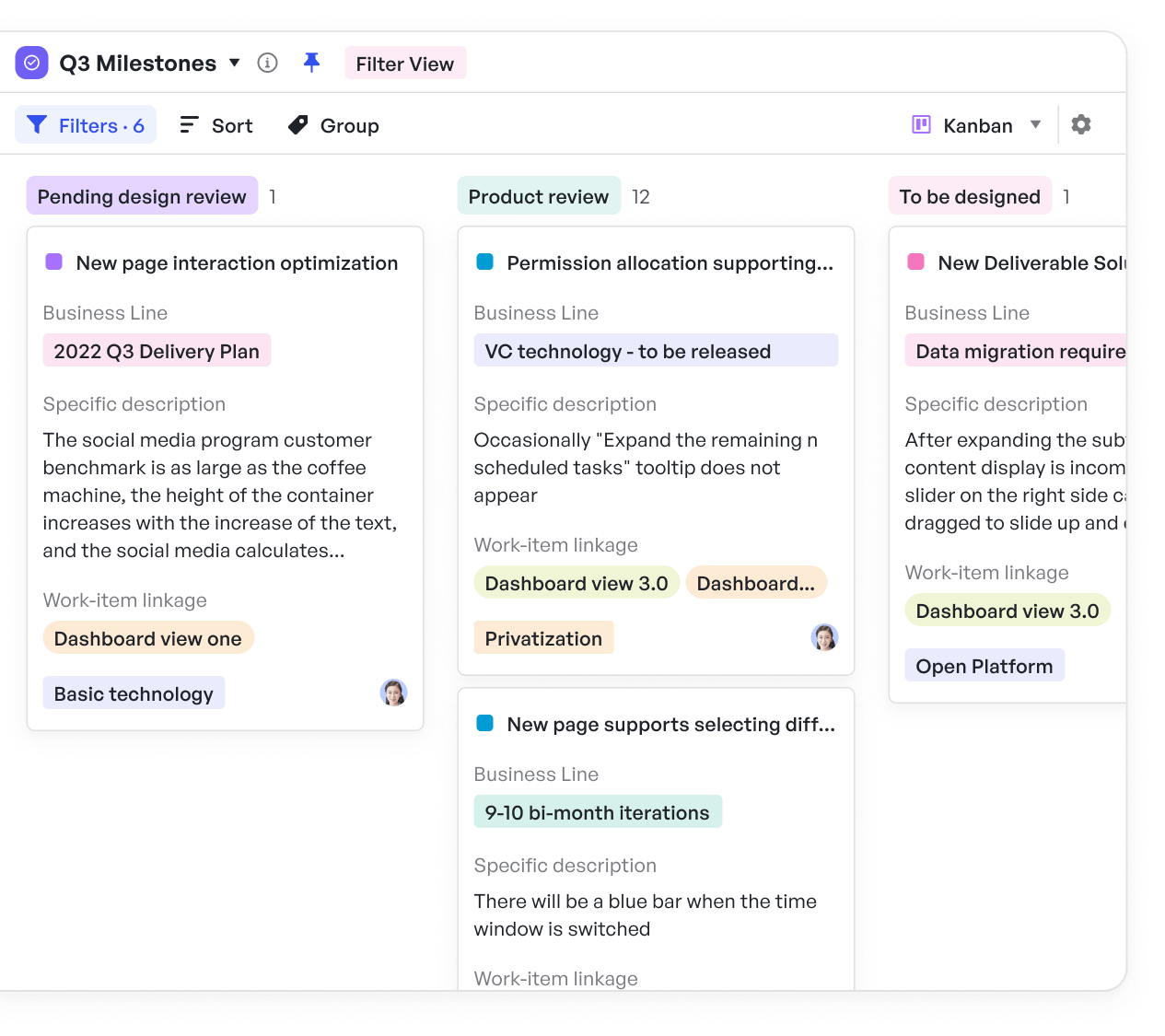 Kanban Chart
Kanban ChartThese tools ensure your overview remains a living document that drives project success.
TL;DR Key takeaway for writing a project overview
A project overview statement is your roadmap to success. It guides teams through goals, scope, timelines, and risks with clarity.
You should follow the steps outlined:
- Defining SMART goals
- Setting boundaries
- Mapping timelines
- Allocating resources
- Mitigating risks, and
- Aligning stakeholders
To create a foundation that prevents misalignment and scope creep.
You should also use Meegle to simplify this process. We offer:
- visual workflows for mapping complex tasks into clear, connected plans.
- real-time collaboration for seamless team input and alignment.
- dynamic tracking for instant updates and progress visibility.
When creating your project overview, think of it as a living document that evolves with updates to reflect progress and changes.
It helps you achieve the expected outcome and keeps everyone on the same page even when you’re launching a product or managing a campaign.
Learned how to write a great project overview? Do it faster with Meegle!!
FAQ
What should be included in a project overview?
A project overview should cover the project’s purpose, objectives, scope, key deliverables, timeline, stakeholders, resources, and success metrics. Including these elements helps everyone understands what the project aims to achieve, who’s involved, and how progress will be measured.
When is the best time to create a project overview?
The ideal time is during the project’s initiation phase – before detailed planning begins. Creating an overview early ensures alignment on goals and scope, helps identify stakeholders, and lays the foundation for all future planning and execution activities.
How can SOPs improve project overview consistency?
Standard Operating Procedures (SOPs) follow a uniform format and process for drafting overviews. They reduce errors, speed up review cycles, and make onboarding new team members seamless, so every overview follows the same clear structure and meets compliance or audit requirements.
What tools are best to create a project overview?
Meegle stands out with its customizable templates for various project types, visual workflows (Tree and Gantt Views), real-time collaboration, and role-based access controls. These features help you craft, share, and update project overviews efficiently, keeping teams aligned and stakeholders informed.
The world’s #1 visualized project management tool
Powered by the next gen visual workflow engineRead More
Check All BlogsStart creating impactful work today



